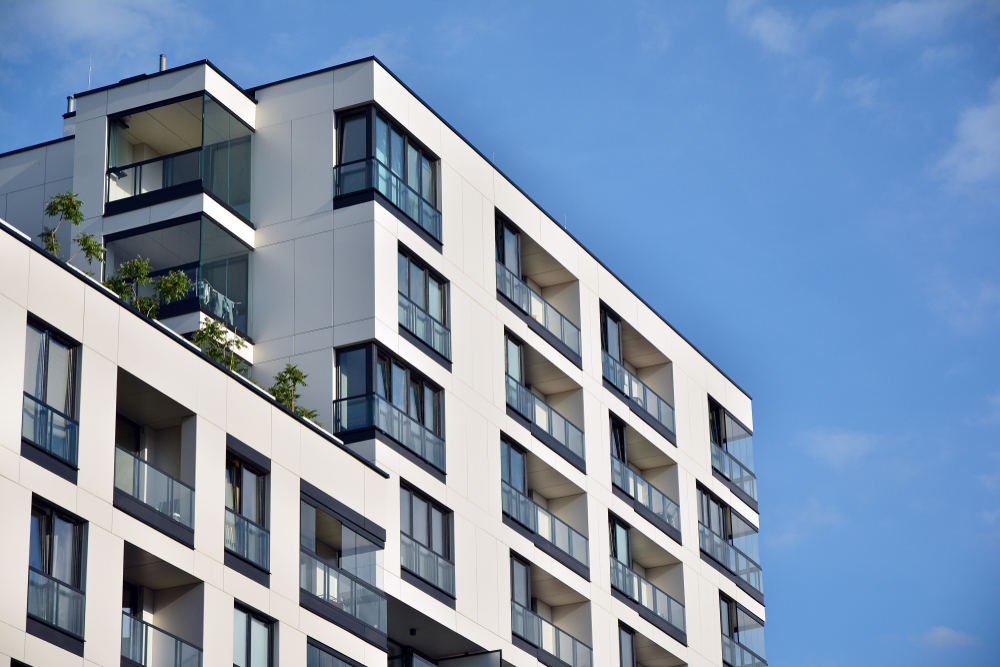Missed Missoula MarketWatch 2023? The Sterling Commercial Real Estate Advisors (SterlingCRE) team is providing a recap of the sessions. Find an overview of the office, retail, and industrial markets here and a review of the short-term rental market here.
Wrapping up our recap of Missoula MarketWatch 2023 is a focus on multifamily housing. Missoula is a rapidly growing city with strong and sustained demand for rental housing. But, as the market evolves, both opportunities and threats evolve for investors, developers, and property managers. Missoula MarketWatch included notes on the current state of the Missoula apartment market, trends, and projections for what might come next.
The State of the Missoula Apartment Market
According to Matt Mellott, the supervising broker of SterlingCRE, the Missoula apartment market has experienced rock-bottom vacancy rates from 2020 – 2021, with apartment vacancy rates of less than 1%. In turn, rents have risen, with an increase of 21.5% from 2020 to 2021, and another 18% increase from 2021 to 2022. This represents rent growth of 43% in just two years. Meanwhile, the delivery of new housing units has been constrained, with only about 200 units delivered in 2020 and 2021, which is well below household growth data as provided by the US Census Bureau.
During this period of low vacancy rates and high rental rates, interest rates were also below 4%. This fueled a frenzy for multifamily investors, with cap rates of traded properties often at or below 4% on actual net income.
However, Mellott notes that there has been a recent change in the market. Rental rates are leveling off, but there is a wide buyer-seller price disconnect. Vacancy rates have also climbed by almost 2% year over year, and housing deliveries are expanding while population growth rates are slowing. As a result, transaction volume is down by almost 40% from 2021.
Overall, the Missoula apartment market is experiencing a shift. While it has been a hot market for the last few years, there are now signs that the market is slowing down. However, it is important to note that Missoula is somewhat insulated from broader market forces due to the presence of a large regional medical center and four year, publicly funded university anchoring the employment landscape.
Trends Shaping the Missoula Apartment Market
To understand where the Missoula apartment market is headed, it is important to examine the trends that are shaping the market. Mellott notes that the dam will eventually break, and price discovery will occur. He cautions that this doesn’t mean a doomsday scenario is looming – instead, that the market will eventually correct itself.
One of the biggest trends to watch is the delivery of new housing units. Mellott notes that there are hundreds of units set to deliver this year, likely resulting in rising vacancy rates combined with flat or declining rents. Additionally, he notes that new permit issuances are projected to decline in 2023.
Another critical trend is population growth. According to the State of Montana’s growth projections, using something called a REMI model, Missoula is projected to have about 0.8-1.1% growth annually, which is slower than what it was even a few years ago.
However, it’s important to note that the census retroactively revised its figures based on the 2020 collection, reducing the Missoula population estimate by about 4,500 people. Mellott noted this is an odd change, and it is unlikely that Missoula was as overstated as the census now indicates.
Missoula’s Multifamily Future
In 2023, around 750 market-rate units are under construction, which represents about 10% of the total apartment market in Missoula County. The population growth is estimated to be around 900 people, which means approximately 387 units need to be built to keep up with the growth. The excess between what household growth demands and the actual number of units delivered typically increases vacancy rates.
As a result, in 2024, apartment deliveries are expected to decline due to increasing vacancy rates and softening rental rates.
As cap rates and the cost of construction rise, bankable apartment development deals are likely to decline in the near term. This decline is likely to then soften construction labor and material prices and/or decrease land costs in the medium term due to a reduction in demand.
All in, Missoula’s multifamily inventory is increasing which is good for tenants. While this signals growing demand and interest in the market, the number of new deliveries is likely to decline in the coming years as apartment vacancy climbs and development deals become unworkable. To avoid perpetuating the unhealthy cycle of boom and bust in housing availability, developers and city officials should look at demand, population growth, and other factors to more consistently meter out housing deliveries.
For more insights on the Missoula multifamily market, contact Matt Mellott.




